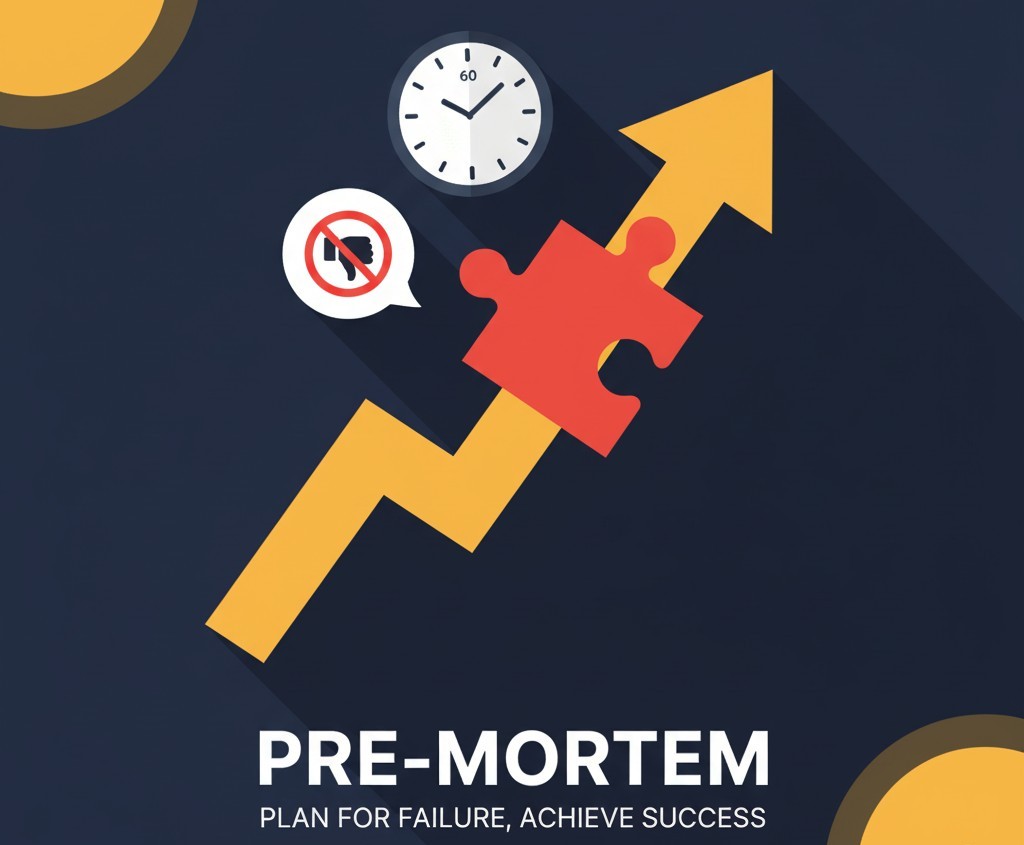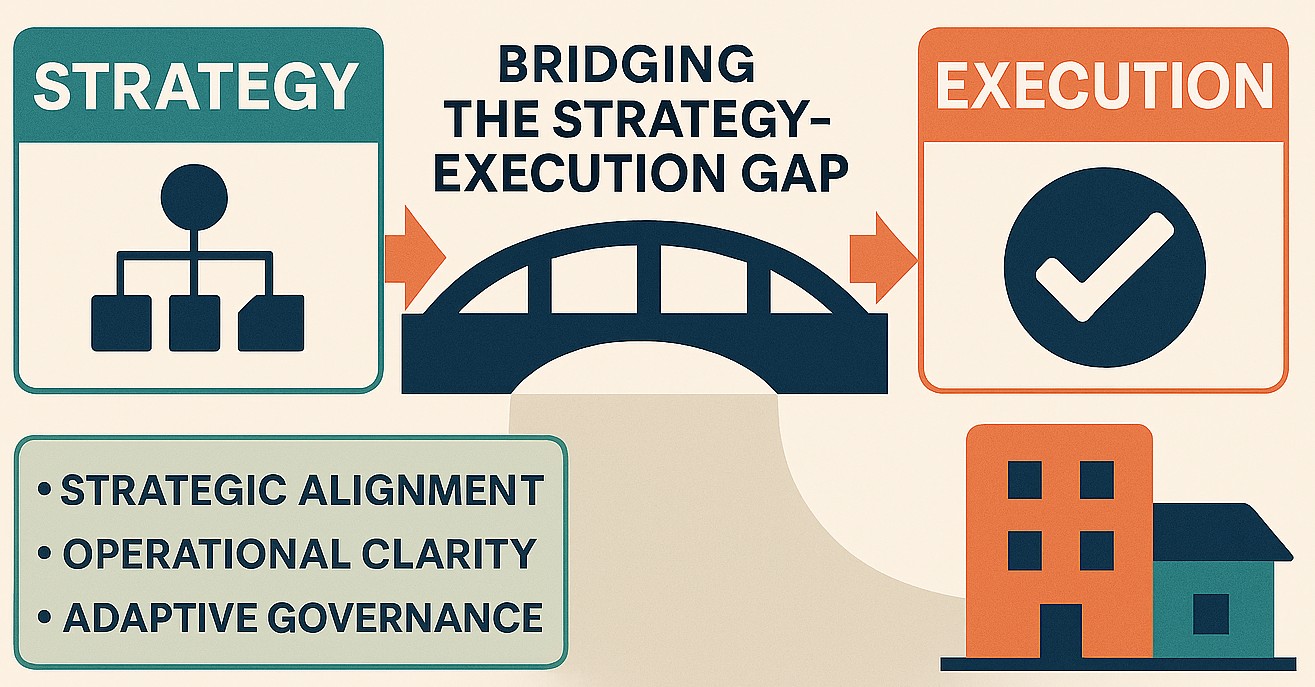Practical Strategy


Breakthrough strategy is rarely about finding capacity for more—it's about the courage to execute less. The organisations that achieve genuine innovation are those that master the strategic discipline of subtraction.
The secret is recognising that every 'yes' to a peripheral project is an implicit 'no' to a core objective. Senior leaders must confront the deep-seated organisational resistance to letting go: the fear of upsetting stakeholders, the comfort of the status quo, and the insidious sunk cost fallacy (ie. the reluctance to abandon something that isn’t working simply because of all that has been invested in it to date).
What it takes is a rigorous, non-emotional assessment. Identify projects, legacy committees, or reporting requirements that do not directly map to your top three strategic goals. Codify these as resource sinks. By purposefully decommissioning low-value work, you don't just free up budget; you liberate the most finite and valuable resource: your high-performers’ cognitive bandwidth. Saying 'no' is not a failure; it is the single greatest act of strategic focus.

The pre-mortem is a fast, powerful team exercise that flips traditional planning on its head and helps you pressure-test your next project. By imagining failure, you can build a stronger foundation for success.
Here’s the 60-minute guide:
1. Set the Scene (5 mins): Gather the team. Announce: "Imagine we are six months in the future. The project was a disaster." Make the failure a certainty.
2. Brainstorm Causes (20 mins): Ask everyone to independently write down every reason they can think of for why it failed. This encourages honest, unfiltered input and bypasses groupthink.
3. Share and Consolidate (20 mins): Go around the room, with each person sharing one reason (seeking cause, not blame) until all points are on a board. Group similar themes to identify the most critical vulnerabilities.
4. Plan to Mitigate (15 mins): For the top 3-5 risks, brainstorm specific actions you can take now to prevent them. Assign owners and timeframes to each action.
In just one hour, you've moved from hoping for the best to actively preparing for the worst, creating a far more resilient strategy along the way.

Want your Delivery Roadmap to truly drive agile success? Keep it simple, visible, and focused on outcomes. First, ensure your roadmap prioritises initiatives based on value, not just effort. Challenge every item: "What problem does this solve? What impact will it have?" This forces strategic thinking and prevents feature bloat.
Next, make your roadmap highly visible and accessible to everyone. Display it prominently, digitally or physically, and reference it in daily or weekly stand-ups and stakeholder updates. This constant exposure reinforces direction. Finally, use the roadmap as a decision-making filter: if a new request doesn't align with a current roadmap theme or significantly alter strategic direction, it should be carefully reconsidered. This disciplined approach ensures focus and efficient execution, making your roadmap an active driver of agile delivery.

A strategy is only as good as its execution. That's why moving from concept to reality requires a clear Delivery Roadmap—a simple, visual guide that translates high-level strategy into tangible action and results.
A straightforward roadmap should focus on three key elements:
- Themes or Initiatives: These are the high-level strategic goals you're working toward (e.g. ‘Enhance Customer Experience’, ‘Achieve Operational Efficiency
- Key Features/Projects: The specific, observable deliverables or projects that support each theme (e.g. ‘Implement new CRM system’, ‘Streamline invoicing process’
- Target Dates: A time-bound (e.g. Q1, Q2, or specific month) delivery window for each feature or project.
Start with a small focus: don’t try to include every conceivable task for the next three years: just map the top three to five highest-impact initiatives for the next 12 months. This keeps the document manageable and maintains a clearline-of-sight between strategy and detail.
Do this with your roadmap, and you’ll give internal and external stakeholders the clarity and visibility they need to maintain confidence and cohesion.

Ever feel like your project is a puzzle with missing pieces? The solution isn't another detailed plan, but a Delivery Roadmap.
This isn't a long-winded to-do list; it’s a high-level, visual guide that charts your strategic direction and major milestones. Think of it as your North Star, showing you the 'what' and the 'when', not the granular 'how'. It's the big picture, a living document that keeps everyone on the same page.
A robust roadmap brings clarity and focus. It acts as a single source of truth for all stakeholders, cutting through confusion and aligning teams toward a common goal. This shared understanding is vital for navigating the inevitable twists and turns of any project.
By focusing on outcomes and major milestones, a roadmap ensures that efforts contribute directly to the overall strategy. It's the secret weapon for managing complexity and delivering value.

Large, complex projects face a minefield of challenges: scope creep, budget overruns, and a lack of clear direction. The key to successful project delivery isn't just about meticulous planning, but also about providing a clear line of sight from intended outcomes to on-the-ground implementation.
Joining up the big picture (on one hand) with the day-to-day (on the other) requires robust mechanisms being in place: delivery roadmaps, project plans, transition plans, and stakeholder engagement frameworks … with relentless follow-up to ensure all these are being actioned, and responsible parties held accountable for results.
Combining higher-order strategic insight with a focus on detail at the coalface creates a cohesive package underpinned by solid governance. This structured, holistic methodology helps achieve greater assurance in project delivery, smoother transitions, and greater ‘sign-on’ from participants.

Effective governance is the bedrock of high-performing agencies. It’s not just about ticking boxes, but also about establishing clear frameworks, ensuring compliance, and continuously evaluating program effectiveness to deliver genuine value. Strong governance, coupled with rigorous performance monitoring, is vital for accountability, robust risk management, and achieving long-term outcomes.
Agencies face complex challenges that demand transparency and efficiency. Embedding solid governance practices ensures every initiative, from policy development to service delivery, is guided by clear objectives and responsible oversight. This allows us to identify and mitigate risks early, optimise resource allocation, and foster a culture of accountability.
Ultimately, governance is a commitment to continuous improvement. By consistently monitoring performance against established benchmarks, we can adapt, innovate, and ensure that our organisations are not just meeting current needs but are also prepared for future demands, driving sustained value in the process.

A robust Social Impact Assessment (SIA) is crucial for ensuring major projects deliver real benefits to communities while minimising negative consequences. Drawing from the NSW Government's SIA Guideline, here are four key ingredients for an effective assessment:
1. Early and Meaningful Engagement: Go beyond tokenistic consultation. Engage with all stakeholders, especially the most vulnerable and directly impacted groups, from the very beginning. This builds trust and ensures the SIA addresses the issues that truly matter to the community
2. A Strong Evidence Base: A credible SIA is built on a solid foundation of both qualitative and quantitative data. This includes demographic statistics, but also local stories, cultural values, and community aspirations. A thorough understanding of the existing social fabric is essential to accurately predict potential impacts
3. A Focus on Mitigation and Enhancement: The goal of an SIA isn't just to identify problems, but to find solutions. This means developing practical, tangible, and enduring measures to mitigate negative impacts and, just as importantly, to enhance the positive benefits a project can bring.
4. Adaptive Management: A good SIA is a living document. The process shouldn't stop once the report is submitted: ongoing monitoring and adaptive management are critical to ensure that mitigation measures are working as intended and to address any unforeseen impacts that may arise.

Here are three key ingredients for an effective program review, designed to help generate meaningful insights and drive continuous improvement.
1. Defined Objectives and Measurable Indicators Before you can determine if a program is working, you must first know what success looks like. An effective review begins with a clearly defined evaluation framework: this serves as the foundation of the review, providing a clear set of benchmarks against which to measure performance … at the start of the review process. Without this, you risk a review process that is subjective, and lacks credibility and ‘bite’ on account of the potential for shifting goalposts.
2. Stakeholder Involvement A program's success is a collaborative effort, so an effective review must engage a broad range of stakeholders. This includes clients, partners, and senior management. By gathering diverse perspectives through surveys, interviews, and focus groups, you can gain a holistic understanding of the program’s strengths and weaknesses. This inclusive approach not only enriches your data but also fosters a sense of shared ownership and support for any changes that may arise from the review.
3. Actionable Insights and Continuous Improvement A program review is not an end in itself; it is a catalyst for improvement. The most crucial ingredient is the ability to translate findings into a clear and actionable improvement plan. A good review will not just identify problems, it will propose solutions. The review should culminate in a documented plan outlining specific strategies, responsibilities, and timelines for implementing changes. This creates a cycle of continuous improvement, ensuring that the review process leads to tangible enhancements in program design, delivery, and outcomes.

You can't build a community with a construction contract. Partnerships are key.
Delivering thousands of new homes will require deep collaboration with the private and not-for-profit sectors. However, traditional, transactional procurement models often fall short. They can stifle innovation, create adversarial relationships, and fail to capture the holistic value offered by community providers, developers, and support services.
A truly effective multi-billion dollar program requires a strategic approach to market engagement. This involves co-designing delivery models that blend finance, construction, and tenancy management expertise. By establishing long-term partnerships based on shared risk, shared outcomes, and clear performance indicators, greater value can be unlocked, innovation in design and tenancy support can be fostered, and assets delivered ensuring benefits for tenants and the state for decades to come.

A $6 billion investment program needs more than a $6 billion budget: it needs a delivery-focused organisation.
Receiving a multi-billion-dollar funding allocation is a huge vote of confidence, but it immediately places immense pressure on an organisation's existing structures, processes, and culture. The capabilities required to manage a steady-state portfolio are fundamentally different from those required to deliver a massive, fast-paced capital works program under intense public and political scrutiny.
Now is the time for leaders to ask critical questions:
· Is our governance agile enough to make timely decisions and manage risk effectively?
· Do we have the commercial acumen to secure the best value from the market?
· Are our teams empowered and our systems robust enough to handle the surge in activity?
Proactively addressing these operating model challenges is a vital investment for ensuring the program delivers on its promise.

Governments are rightly investing billions into social housing, but translating policy into tangible outcomes—homes built, lives improved—is where the real complexity lies.
Strategy, while vital, needs to be joined at the hip with implementation. Delivery typically struggles with long lead times, multiple processes and legacy systems … and maintaining that most essential ingredient: momentum.
Structured alignment is required to materialise the good intentions. Delivery roadmaps that cascade strategic goals into operational milestones, adaptive governance that responds to on-the-ground realities, and performance frameworks that track each of inputs, outputs and outcomes (and the links between all three) help ensure that housing programs deliver what they promise.
As public housing programs scale, the ability to execute with precision and agility becomes a strategic asset: delivery is a core capability.
Bridging the gap between vision and reality is the perennial challenge … and meeting it is what fulfils the promise.

The key to wrangling a project, to making it tractable, is to ensure you can get your head around the length and breadth of it. Here are three aids to doing that:
- Ensure there is a place to park new or unresolved issues – such as a Parking Bay or Issues Log – to ensure these don’t get lost before they find a home. And then make sure you have a mechanism, such as a regular project or working group meeting, to review and allocate them, and track their resolution
- Ensure there is a specific means of identifying, capturing and managing risks. This should sit across the project plan so that factors which might hinder the accomplishment of project milestones are flagged, with sufficient time for them to be addressed
- Communicate … even when there is no change. An absence of communication is not the same as a communication of ‘no change’ or ‘no progress’. It’s still important for people to hear ‘Nothing to report’ if that is the accurate project status update. Ensure a constant flow of communication up, down and across all participants and stakeholders … and don’t confuse a message of ‘No change’ … with no message.

- The ℎ𝑜𝑙𝑑𝑖𝑛𝑔 𝑟𝑒𝑝𝑙𝑦 – a valuable means – in the age of digital communication – of letting people know you’ve received their email or voice message … but don’t have the time to properly respond just yet
- The 𝑚𝑒𝑒𝑡𝑖𝑛𝑔 𝑎𝑔𝑒𝑛𝑑𝑎 – an agenda sent out to participants in advance of a meeting is (along with the work that happens between meetings) likely the key success factor of any meeting
- The 𝑖𝑠𝑠𝑢𝑒𝑠 𝑙𝑜𝑔 – for capturing and holding important issues that require resolution … without having to detour from immediate priorities
- The 𝑟𝑖𝑠𝑘 𝑟𝑒𝑔𝑖𝑠𝑡𝑒𝑟 – not just for review at Board Risk Committees, but also a vital input to regular management deliberation … and strategy development efforts (in particular the Threats section of a SWOT analysis)

- ‘The best predictor of the success of a meeting may be a written agenda distributed in advance’ (Romano & Nunamaker) … even a regular weekly stand-up meeting should have an agenda.
- In a meeting, follow the thread of the conversation, and if it gets off track, bring it back on course.
- If there are important issues which need attention, but risk derailing other items, put them on a parking bay and assign them to someone to progress and report back at a future meeting.
- Debussy said ‘Music is the space between the notes’; the value of a meeting depends on what happens between meetings (follow-up, implementation). Meetings are to share information, coordinate players, make decisions and track results: they are to progress action, not avoid it.

- The title or subject should encapsulate the issue being addressed. Be on point, not oblique
- Crystallise the key points so the issues are succinctly spelt out on the cover sheet, and the reader/approver can ‘get’ the issue within a minute or two
- Use the logic of the briefing note structure (Issue, Background, Current Position, Recommendation, or similar) to take the approver on a ‘journey’ that guides them where you need them to be
- Don’t ramble. Apply Occam’s Razor
- Include an action which lets the approver know what they need to do. If the purpose is to inform them, then the recommendation is ‘For information’
- Relegate large sources or technical material to an appendix. The cover sheet should stand on its own and reference any appendices.

Many organisations have to comply with requirements imposed on them by a central office. There may be mandatory strategy sessions, or plans that have to be submitted.
These are typically seen as burdens to be completed as painlessly as possible to get ‘corporate off our back’. But there are more strategic ways of viewing them. Fulsomely meeting the requirements of a parent organisation is an opportunity to demonstrate competence, and gain favour with a stakeholder who can make funding available or open doors.
Your contribution may also shape central office’s agenda: if you have to prepare risk management plans you can use your plan to shape the conglomerate’s approach to risk.
Rather than complaining about the inevitable, why not leverage it?

